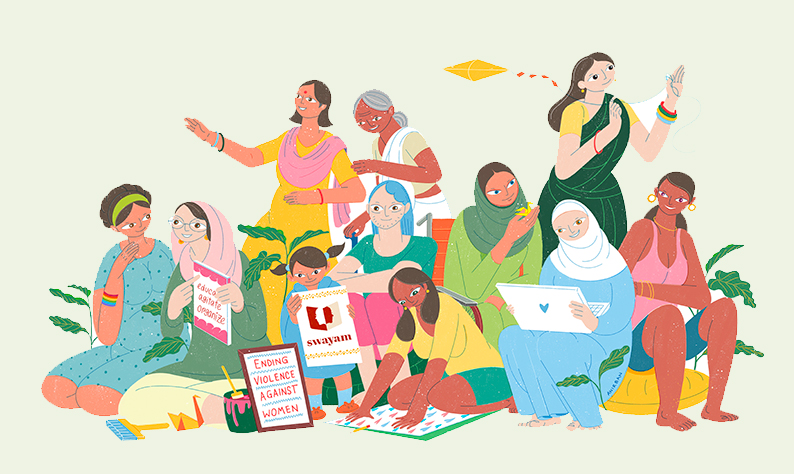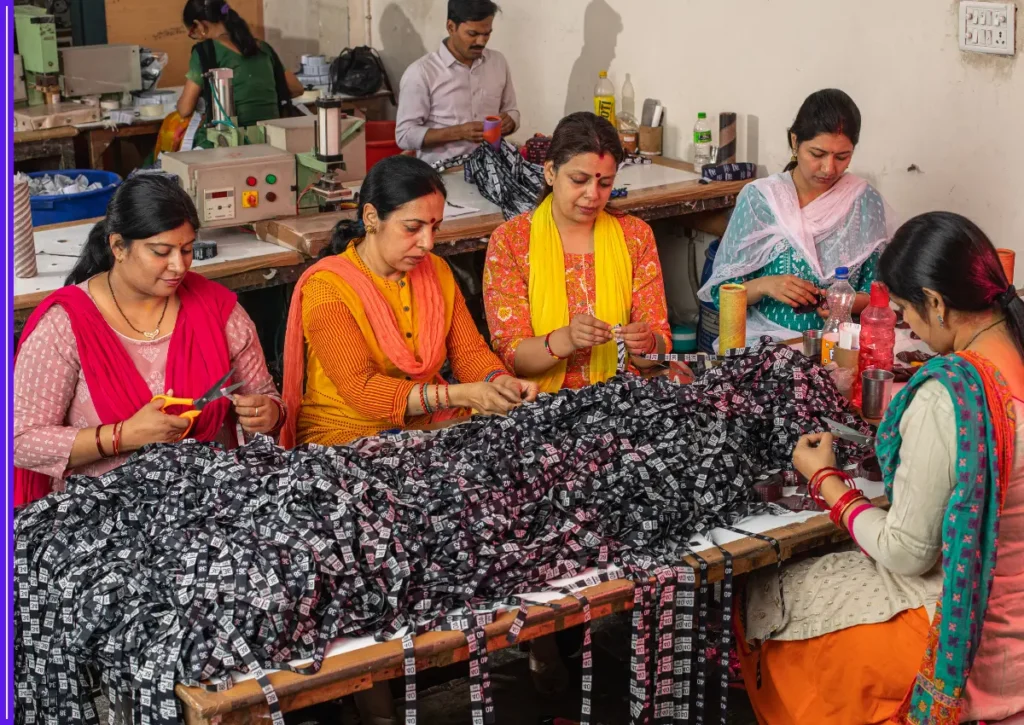Did you know that there are several programs in place to help empower women in India? These Programs provide women the chance to better their life and become economically independent. The numerous Women Empowerment Schemes in India and what they provide will be covered in this blog article. We’ll also look at the government initiatives for women’s emancipation in India by 2023. So let’s get going!

Understanding Women’s Empowerment in India
Women’s empowerment is not just about giving rights; it is about ensuring freedom, equality, and opportunities. In India, empowerment means access to education, healthcare, financial independence, safety, and representation in decision-making spaces.
Campaigns across the country have worked to:
- Improve girls’ education
- Provide healthcare and nutrition
- Create employment opportunities
- Encourage entrepreneurship
- Ensure safety and protection
- Promote legal rights and awareness
The Historical Roots of Women’s Empowerment in India
The struggle for women’s empowerment in India is not new. From Savitribai Phule, who pioneered girls’ education in the 19th century, to Rani Lakshmibai, who fought for freedom, women have always been central to India’s social reforms.
Post-independence, campaigns like the Self-Employed Women’s Association (SEWA) in 1972 and the Mahila Samakhya Programme in 1989 laid the foundation for women’s participation in the economy and education.
Today’s campaigns are built upon this legacy, combining grassroots activism with government policies and digital outreach.
What are initiatives for women’s empowerment?
The Central Government of India and the State Governments have initiated many programs aimed at empowering women. Giving women of all ages equitable access to resources, opportunities, decision-making authority, and capacity building is referred to as “women empowerment.” Education, skill development, expanding employment options, etc. are all ways to empower women. One of the top goals of the Indian government is to implement government program for women’s empowerment. Through several ministries and agencies, the government has launched numerous programs to empower women.
Grouping of Women’s Empowerment Program
The two categories of women’s empowerment program in India are:
- Static Women Empowerment Program: These areprogram that the government has put into place permanently.
- Dynamic Women Empowerment Program: These Programs are ones that are in place for a set amount of time.
Women’s access to possibilities for work, financial support, and education is the goal of women empowerment schemes. The Program also seek to improve the health and wellbeing of women. The following sections list some of India’s most significant women’s empowerment initiatives.
Various Programs for Women’s Empowerment:
The following list of several women’s empowerment initiatives:
* State government program promoting women’s empowerment.
*program for empowering women in order to help them improve their economies.
*program for women’s emancipation and education.

A list of empowerment initiatives for females in India
– Self-Help Group (SHG) Program for Women
A government program called Women SHG attempts to give women from low-income families financial support. This program helps Indian women gain economic independence by forming women’s SHGs at the grassroots level. In certain regions of the nation, Mahila Mandals are another name for women SHGs.
– Funding Program for Women Entrepreneurs:
The Indian government introduced the Women Entrepreneurship Fund Scheme in 2020. Women Entrepreneurship Fund Scheme might be helpful for female entrepreneurs who want to launch a company endeavour but lack the necessary capital. Women who want to take advantage of this program can submit an application through the Women Startup Hub website.
– The Pradhan Mantri Matru Vandana Yojana
A government program called Pradhan Mantri Matru Vandana Yojana was introduced in 2019. The purpose of this program is to give pregnant and lactating women or moms financial support so they may care for their own and their children’s health. The program offers 6000 rupees in cash aid to expectant and nursing mothers. This program is only available to women once, during the birth of their first child. This program is also open to mothers who have given birth to girls, had stillbirths, or are expecting their second child.
– Women and Child Development Schemes:
A number of program have been introduced by the Women and Child Development Ministry of the Indian government to empower women and children. The Women and Child Development Ministry’s program are designed to aid women financially and to improve their quality of life by ensuring that their children receive the proper education and medical attention.
The following are a some of the ministry’s program for women and children:
Beti Bachao, Beti Padhao:
A government program called Beti Bachao Beti Padhao was introduced in 2015. This plan aims to protect and educate the girl child. This program is available to women from economically disadvantaged strata who have given birth to female children. Women should submit applications for this program through the state governments’ Women and Child Development (WCD) offices. Women are eligible for this program until their female child reaches adulthood.
Sukanya Samriddhi Scheme:
In 2015, the Sukanya Samriddhi Scheme, a government program, was introduced. This program’s goal is to give girls financial support so they may pursue their education and realise their ambitions. This program is available to female parents of female children. Women should submit applications for this program through the state governments’ Women and Child Development (WCD) offices. Women are eligible for this program till their daughter becomes 21 years old.
Indira Gandhi Matritva Sahyog Yojana:
A government program known as the Indira Gandhi Matritva Sahyog Yojana was introduced in 2010. The purpose of this program is to give first-time mothers who come from economically disadvantaged backgrounds financial support. Women who have applied for this program are eligible to use it until their kid reaches two.
Mahila Shakti Kendra Scheme
This program was introduced in March 2017 with a $500 million investment. The program’s goal is to establish Women’s Empowerment Centres in each of the nation’s districts. These centers would provide women a one-stop shop for services like education, legal assistance, financial inclusion services, access to government schemes and programs, health and nutrition services, and training in skill development.
One Stop Centre Scheme (OSC) – Sakhi
Started in 2015, these centers provide integrated support services to women affected by violence. They offer shelter, police assistance, medical aid, legal advice, and counseling under one roof.
- Impact: Helped lakhs of women across India who faced domestic violence, harassment, or abuse.
Mahila-E-Haat
This is a direct online marketing platform launched by the Ministry of Women and Child Development in 2016. It provides women entrepreneurs, self-help groups, and NGOs an opportunity to showcase and sell products online.
- Impact: Empowered thousands of rural women artisans and entrepreneurs by giving them direct market access.
Stand-Up India Scheme
Launched in 2016, the campaign supports women entrepreneurs by providing bank loans between INR 10 lakh and INR 1 crore for setting up new businesses.
- Impact: Encouraged women in rural and urban areas to move into entrepreneurship and job creation.
The Role of Media and Digital Platforms
Social media has become a game-changer in women’s empowerment campaigns. Hashtags like #SelfieWithDaughter, #LadkiHaathSeNikalGayi, and #MeTooIndia amplified voices, broke taboos, and created national debates around women’s issues.
Digital platforms also gave rural women visibility. Online marketplaces enabled women artisans from villages to sell crafts to customers across India and beyond.
Conclusion
In India, programs promoting women’s empowerment seek to ensure that all women have equal access to resources, opportunities, and safety. The government and NGO’s both operate a variety of programs and projects aimed at accomplishing this objective. Government Programs for women’s empowerment in India 2023 have gone a long way and continue to have an influence on the lives of millions of women each year, despite the fact that there is still more work to be achieved. Please continue reading for a detailed explanation of these government programs promoting women’s empowerment if you’re interested in knowing more. Are you trying to find methods to give girls and young women in your neighbourhood more power? Visit this page to see our interesting articles!









